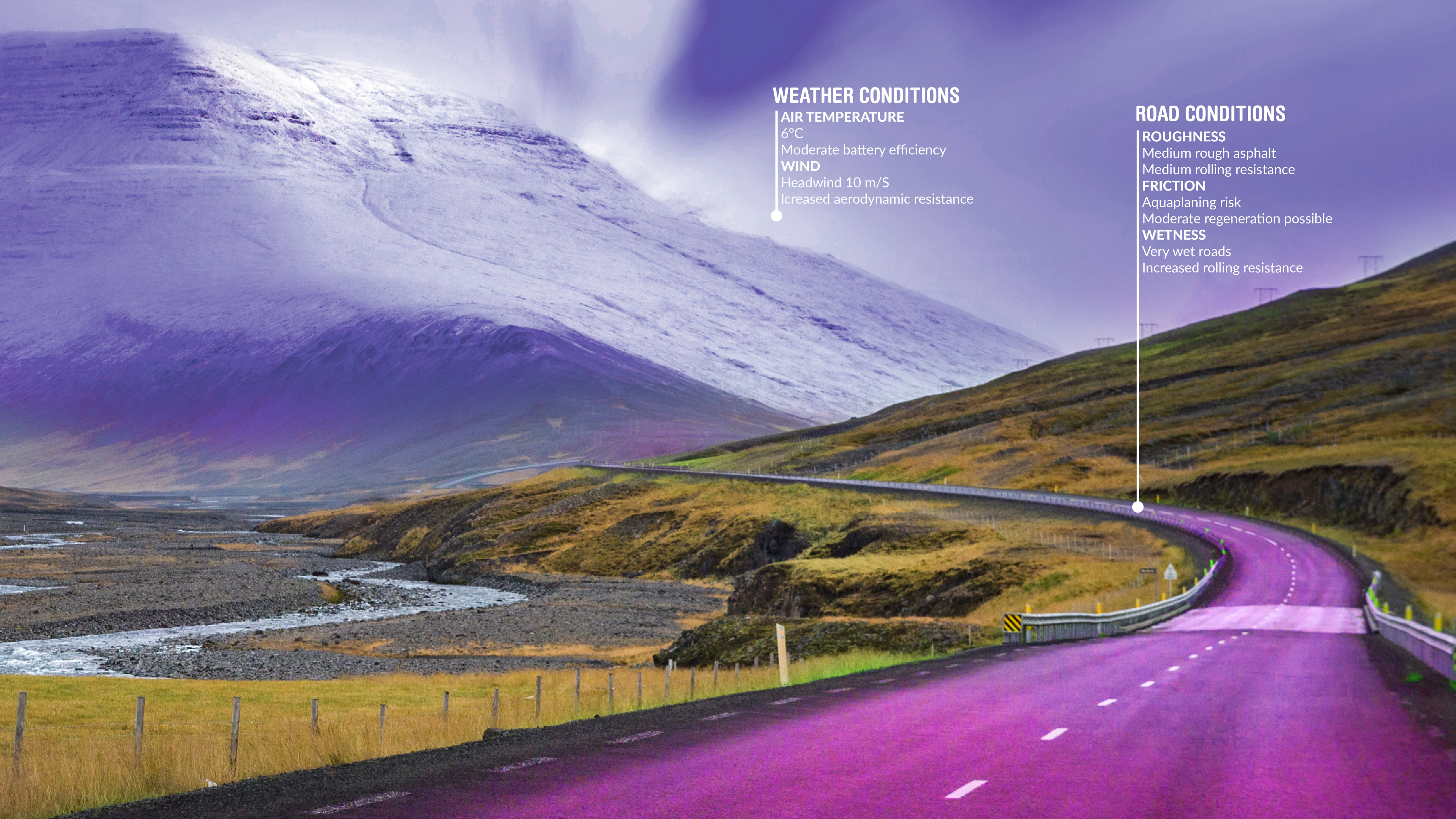Road and Weather Condition Data: Enhancing Safety and Comfort for ADAS and Autonomous Driving Features

When it comes to driving, safety is non-negotiable. As we move toward a future dominated by autonomous driving (AD) and ADAS technologies, understanding and responding to road and weather conditions has never been more critical. That’s where the partnership between Vaisala Xweather and NIRA Dynamics steps in. Together, we are leveraging real-time weather and road condition data to create safer roads, smarter cars, and more reliable autonomous driving experiences.
The Challenge: How weather and road conditions impact safety
Every fifth road accident globally is related to weather. Water, snow, and ice on the road surface reduce tire friction, increasing the likelihood of skidding, accidents, and other dangerous driving conditions. For autonomous driving systems, the challenge is even greater: while vehicle sensors can detect immediate surroundings, their reach is limited. Autonomous systems can only react to what the car’s sensors detect in real time, which isn't enough for planning over longer distances in complex conditions.
Additionally, some weather phenomena block or reduce the performance of vehicle sensors. For example, spray lifted from a wet road by the vehicles driving ahead reduce visibility similarly to fog and blowing snow.

This is where the Vaisala Xweather and NIRA Dynamics partnership changes the game. By merging connected vehicle data from NIRA with advanced weather forecasting from Vaisala Xweather, ADAS and autonomous systems can now anticipate changing road conditions further ahead and adjust accordingly. This provides an enhanced level of comfort and safety for both drivers and autonomous vehicles.
Improving ADAS and AD features with road and weather data
Today, operational design domains (ODDs) for ADAS and AD features are often limited by weather and road conditions. Systems that are intended to assist drivers or operate vehicles autonomously may become less effective—or even unsafe—when faced with poor weather or unexpected road conditions like ice, rain, or rough surfaces.
By integrating real-time data on road friction, surface quality, and weather forecasts, manufacturers can significantly improve the range and reliability of these systems. Knowing where road conditions are worse than normal allows for automatic adjustments to driving speeds, braking patterns, and lane changes, all of which contribute to safer and more comfortable driving experiences. Or the car can actually select a completely different route, all based on weather and road conditions.

Whether the road is slick with ice or uneven from wear and tear, the collaboration between Vaisala Xweather and NIRA Dynamics ensures that the vehicle and driver will always be prepared.
Real-Time Data: The foundation of safer Autonomous Driving
Autonomous driving requires more than just the ability to detect obstacles or read road signs. It requires a complete understanding of the environment, especially in unpredictable weather. Sensors attached to vehicles provide valuable data, but their reach is limited to the immediate surroundings of the vehicle—what’s happening ahead or in more remote parts of the route remains unknown. Also, detecting ice is extremely difficult using for instance camera solutions.
Through this partnership, data on actual road conditions is transmitted in real-time from millions of connected cars. The data is aggregated and combined with weather insights, creating several full-coverage map layers. These map layers complement what the vehicle’s own sensors pick up, providing a more comprehensive view of the driving environment. As a result, ADAS systems and autonomous driving features can be improved to provide safer, more reliable driving experiences, whether in urban, rural, or extreme weather conditions.
Key benefits for car manufacturers and road network owners
This collaboration isn't just about improving individual driving experiences. Car manufacturers can use the data to extend the capabilities of their ADAS and AD features, enhancing the reliability of their vehicles in diverse driving conditions. This means fewer accidents, reduced liability, and more satisfied customers.
Road network owners, meanwhile, can benefit from timely, actionable data that informs road maintenance decisions. Knowing where roads are slick, worn down, or damaged can help teams prioritize repairs and reduce accidents before they happen. For example, a vehicle sending tire grip data can alert winter maintenance teams to icy patches before they become dangerous.
Looking Ahead: A future of safety and sustainability
This partnership is about more than just data—it’s about creating a future where autonomous driving is not only possible but also safe and reliable in any weather or road condition. As vehicles continue to evolve and new technologies emerge, the role of real-time, predictive insights will only grow in importance. Together, Vaisala Xweather and NIRA Dynamics are building a platform that combines the best of both worlds: real-time road condition monitoring and advanced weather forecasting.
As we look ahead, the possibilities are endless. From reducing accidents to enhancing comfort for drivers and passengers, this partnership is setting the stage for the next generation of autonomous driving systems. Whether you’re a road network owner, automotive manufacturer, or driver, this collaboration ensures that everyone benefits from safer, smarter, and more sustainable roads.




